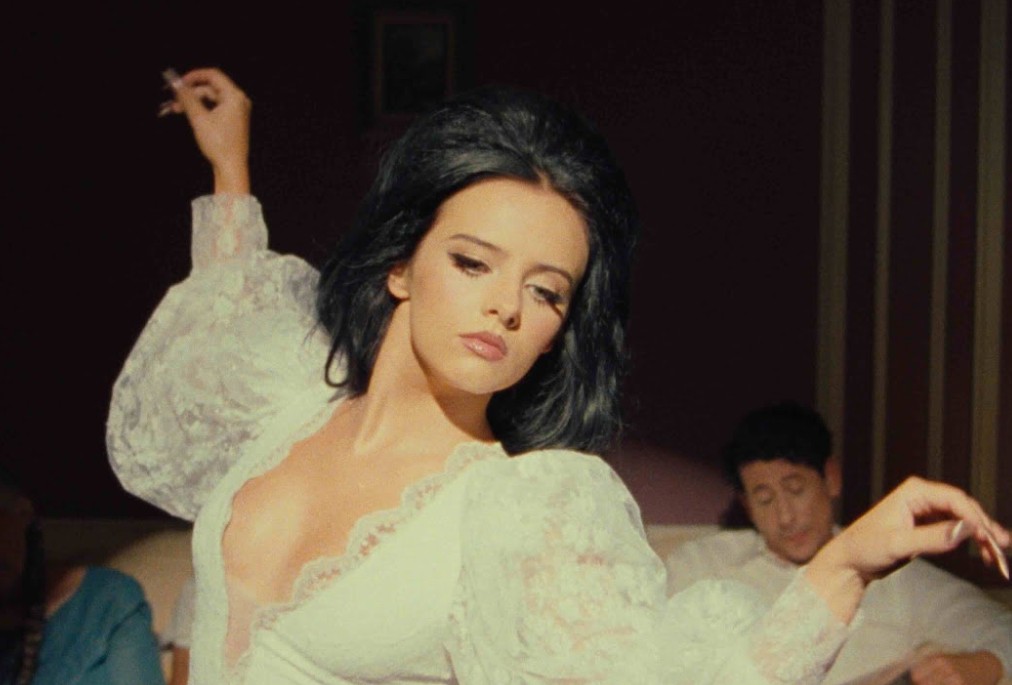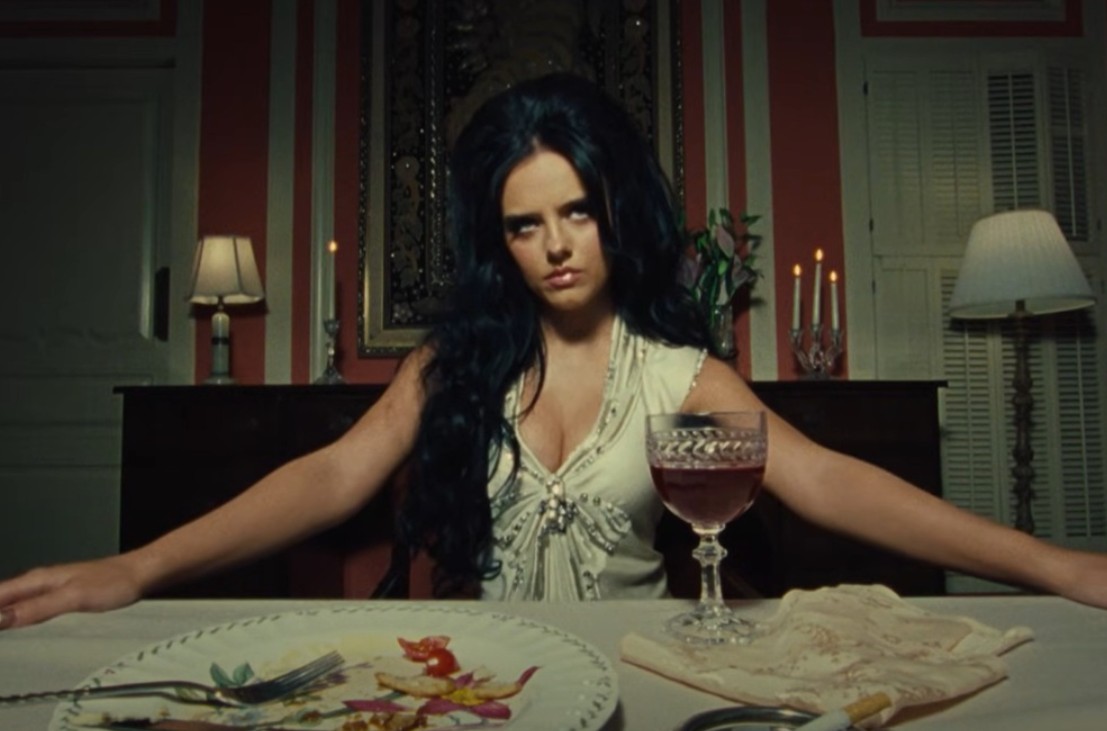Jessie Murph is no stranger to pushing boundaries. The Alabama-born singer-songwriter, known for her raw, emotionally unfiltered music, has built her brand on being unapologetically bold. From her breakout single “Blue Strips” to the gritty, heartfelt duet “High Road” with Koe Wetzel, she has garnered a loyal following who appreciate her willingness to go there, wherever there may be. But her latest release, the music video for “1965,” may have gone beyond what many fans and casual viewers were prepared for.

With a disturbing narrative, disjointed visuals, and lyrics that sparked accusations of normalizing abuse, “1965” has ignited controversy across social media platforms. While some argue the video was intended to be artistic or satirical, most agree it failed to deliver a coherent message. Instead, it left viewers confused, uncomfortable, and in some cases, outright angry.
A Career Marked by Edginess and Full Video
Before diving into the video itself, it’s worth understanding Jessie Murph’s rise to fame. A native of Alabama, Murph gained recognition on platforms like TikTok and YouTube for her emotionally transparent lyrics and moody soundscapes. Her vulnerability and rebellious persona resonated with Gen Z audiences seeking authenticity.
The full video of Jessie Murph with its controversial scene is sparking heated discussions
jessie-murph-1965-full-music-video.mp4
Tracks like “Always Been You” and “Pray” showcased her ability to blend heartbreak and attitude. But it was her collaboration with country-rock star Koe Wetzel on “High Road” that helped elevate her to a new level of visibility. That momentum created high expectations for any new project she released.
Unfortunately, the anticipation surrounding “1965” may have only amplified the disappointment and backlash when the music video finally dropped.
A Retro Dream That Turns into a Nightmare
At first glance, the “1965” video appears to be a stylistic throwback. With a heavy retro filter, soft grain, voluminous hair, and Jessie dressed in a white wedding-style dress, the visuals evoke a kitschy 1960s aesthetic. It feels intentionally camp, like a surreal Pinterest wedding meets a mid-century fever dream.

But that aesthetic quickly unravels.
The video’s tone shifts from whimsical to unsettling around the 1:30 mark. Viewers watch Jessie sitting passively at a table with her onscreen husband and his family. Her demeanor is cold and detached. Then, the husband casually walks off with another woman in front of her, and Jessie remains seated, smoking a cigarette. No tears. No anger. No visible reaction.
What follows is far more jarring: the camera lingers as her husband is shown cheating on her onscreen. It’s not overtly, but it’s disturbingly explicit for a mainstream music video, especially one available on YouTube. The lingering discomfort viewers feel is only heightened by Jessie’s blank expression. Is this a statement on female numbness? A critique of emotional suppression? If it was meant to make a point, the point wasn’t clear.
The Scene That Sparked Outrage
Perhaps the most controversial moment happens just before the cheating sequence. A young girl appears onscreen, handing Jessie an iPad. Her presence sparked immediate concern and outrage among viewers. Comments flooded in questioning why a child was even featured in such a disturbing and adult-themed video.

“There was absolutely no reason for a child to be in the scene right before or even in this music video at all. Insane,” one user commented.
Others went further, saying they had reported the video to YouTube and flagged it as inappropriate. The presence of the child, juxtaposed with adult themes and graphic visuals, felt not only tone-deaf but ethically questionable. It added fuel to the growing backlash and further muddled the video’s intended message if there was one.
Lack of Narrative and Artistic Coherence
Art is often meant to provoke. Discomfort, when done intentionally and with purpose, can lead to deep reflection. But the discomfort caused by “1965” seemed less about provoking thought and more about provoking outrage.

The biggest critique from fans and critics alike is the video’s lack of a cohesive narrative. While some segments appear to allude to themes of betrayal, repression, and emotional numbness, these ideas are lost amid erratic shifts in tone, ambiguous symbolism (like the rope scene around 2:00), and inconsistent pacing.
Without a clear thread or story to follow, many viewers were left asking: What was the point?
The Lyrics: Edgy or Irresponsible?
Beyond the visuals, the lyrics of “1965” also came under heavy scrutiny. One particular verse drew attention for seemingly normalizing domestic violence in a dismissive, casual tone:
“I might get a little slap slap
But you wouldn’t hit me on Snapchat
Don’t f****** text me at 2am saying where you at at
Boy f*** you”
The lyrics aim for raw Gen Z rage and viral relatability, but instead fall flat and come off as reckless. Many listeners felt that using a throwaway line about physical abuse for the sake of shock value was both harmful and tone-deaf.
“I just know she thought this was gonna be revolutionary,” one viewer posted, summing up the general sentiment.
To make matters worse, the title “1965” seems disconnected from both the lyrics and the visuals. If it’s meant to evoke a cultural critique of mid-century norms or relationships, the connection is too abstract or poorly communicated to land with viewers. Several commenters even pointed out historical inaccuracies, movies and media clearly existed before 1965 further weakening the credibility of any intended symbolism.
Jessie’s Response: A Satire Defense That Didn’t Stick
As the backlash mounted, Jessie Murph took to social media to clarify her intent. According to her, the video was meant to be satire, an exaggerated, stylized commentary on societal expectations, toxic relationships, and repression.

But by that point, the damage had been done. The comment sections across platforms were filled with skeptical responses:
“Why you lying.”
“It’s not, you’re just embarrassed now.”
“This isn’t satire, it’s just poorly made.”
The problem with satire is that it must be obvious or clever in its delivery. Ambiguity works in poetry, but in visual media, especially music videos, it’s a risky game. Jessie’s failure to clearly communicate a satirical tone left viewers feeling misled or manipulated.
When Provocation Fails Without Purpose
Some of the greatest art in history has made audiences uncomfortable, but it also made them think. Artists like Childish Gambino (“This is America”) or Rina Sawayama (in “STFU”) have used satire and dark themes effectively, forcing audiences to reflect on culture, race, and identity.
What separates those works from Jessie Murph’s “1965” is intention, structure, and execution. In “1965,” there seems to be a lack of all three. Instead of a bold statement, the video comes off as an edgy attempt at virality, reliant on shock value without substance.
When provocation isn’t paired with purpose, the result is noise. And unfortunately, that’s how many critics now view Murph’s latest release.
One thing is undeniable, Jessie Murph has people talking. “1965” has sparked heated debate, inspired analysis, and drawn strong emotional reactions. But whether that’s a win for her as an artist is still up for debate.
In an age where artists use visual media to elevate their storytelling, the bar for meaningful and ethical content is higher than ever. Jessie’s video might have been intended as commentary or satire, but the lack of clarity, coherence, and responsibility turned it into a misfire rather than a masterpiece.
As Murph moves forward in her career, “1965” may serve as a lesson: pushing boundaries isn’t enough. Without purpose, without narrative, and without respect for your audience, even the boldest statements can fall flat.
And in today’s digital landscape, the difference between art and outrage is often just a few seconds and one controversial scene, apart.
News –